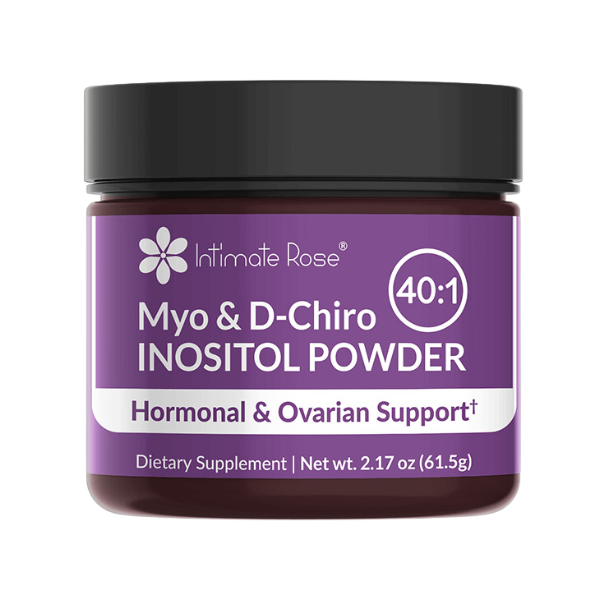A thick white discharge usually means ovulation or pregnancy, however, when accompanied by an unpleasant odor, or the texture becomes lumpy, then it's probably a sign of an infection.
What Causes Discharge to Be Thick and White?
Common causes of thick white vaginal discharge include:
- Normal hormonal fluctuations during the menstrual cycle
- Pregnancy
- Ovulation
It can also be a sign of a yeast infection, especially if accompanied by itching, irritation, or a bread-like smell.
Thick White Vaginal Discharge Every Month
Because vaginal discharge is controlled by female hormones, it can regularly change in thickness throughout the month, depending on which stage of the reproductive system is occurring.
A thick white vaginal discharge, for example, generally indicates ovulation, i.e. an ovary is releasing an egg. This usually occurs on day 14 of the cycle. Also known as fertile discharge, this monthly thickening of vaginal mucus can alert women trying to get pregnant that they are ovulating. Alternatively, it also helps women who are not yet ready to conceive to take precautions during intercourse.
Thick, White & Sticky Discharge
White stickier discharge helps to prevent vaginal infections in the days following menstruation when the vagina naturally produces less mucus than other times of the month. It also cleanses any harmful bacteria from the vagina and stops sperm from entering the cervix or uterus post menstruation.
So what causes discharge to become sticky? Just as women experience a certain type of discharge when ovulating, discharge also changes once ovulation is finished. Post ovulation, (days 14-22) the female body produces more progesterone, which results in a sticky & thick white discharge.
Thick White Discharge After Intercourse
Should you notice a thick white vaginal discharge after sexual activity, it could be a sign of a sexually transmitted infection (STI) from unprotected sex, oral sex, or contact with infected genital fluids. Common STIs that cause a thick white vaginal discharge include gonorrhea, chlamydia, and trichomoniasis.
Because each of these infections can be present in the body without any symptoms, it is vitally important to schedule regular tests for STIs if you are sexually active with several partners.
When symptoms do occur, they include:
- Gonorrhea: A thick white vaginal discharge in more increased amounts than usual, as well as pain while urinating, discomfort during sex, and spotting between periods.
- Chlamydia: A thick white discharge that can become yellow if left untreated, as well as pain while urinating, discomfort during sex, and spotting between periods.
- Trichomoniasis: A thick white vaginal discharge that may change to a yellow or green color if left untreated, as well as itching & redness around the vulva and vagina, a burning sensation when peeing, and discomfort during sex.
The above-mentioned STIs are easily treated with antibiotics, however, if left untreated, they may lead to more serious conditions and severe discomfort. It’s also important that patients with STIs notify their recent sexual partners to receive treatment too, in order to avoid reinfection, or further spreading to other sexual partners.
What Causes Thick White Discharge With Odor?
A white-grayish-colored vaginal discharge that is accompanied by an unpleasant cheesy smell or fishy odor is not considered healthy and usually signals a vaginal infection called Bacterial Vaginosis.
(As a side note, the above-mentioned STI, trichomoniasis, can also result in a thick white discharge accompanied by a cheesy or fishy smell, but the odor is not always present.)
Bacterial Vaginosis is an infection caused by the overgrowth of certain bacteria in the vagina, which in turn upsets the natural pH balance. As well as the white-gray color and unpleasant odor, additional symptoms of BV can include a burning sensation during urination, vaginal itching, redness, as well as sores on the vulva.
While antibiotics are usually necessary to treat BV, additional supplements like Boric Acid Suppositories from women’s health experts, Intimate Rose, are specially designed to quickly soothe irritation and rebalance the vaginal microflora, as well as prevent recurring BV infections.
The risk of BV infections is also believed to be increased by activities such as douching, smoking, and engaging in unprotected sex.
Things Off Down There?
Thick White Lumpy Vaginal Discharge
When thick white vaginal discharge changes texture to become more lumpy like Cottage Cheese, it usually signals a yeast infection. This type of infection normally emits an intense odor, like stale cheese or rotting fish, and is accompanied by itching or irritation of the vulva. Pain during intercourse could also be a side effect of a yeast infection and discharge has been known to turn a yellow-green color if left untreated for too long.
While a certain amount of yeast in the vagina is perfectly normal, the natural pH balance can be upset when a fungus known as Candida Albicans is allowed to thrive into an infection. Causes of this imbalance to the natural pH of the vagina include stress, the use of birth control pills, or antibiotics to treat another condition.
Yeast infections are easily cured with over-the-counter creams or ointments and although sexual partners do not need treatment, it is advisable to abstain from intercourse until the infection has cleared.
Boric Balance

Conclusion
In most cases, a thick white vaginal discharge is a sign of a healthy reproductive system and vagina. However, when it becomes clumpy like cottage cheese or is accompanied by an unpleasant odor, a burning sensation while urinating, or discomfort during sex, it is more than likely a sign of a yeast infection, bacterial vaginosis, or an STI.
Should you suspect you have a vaginal infection, it is important to schedule an appointment with your healthcare provider for immediate treatment to avoid more serious complications.
References
Cleveland Clinic - How to Decode Your Vaginal Discharge - https://health.clevelandclinic.org/vaginal-discharge-mean/
Medical News Today – What to Know About Cervical Mucus and Fertile Discharge https://www.medicalnewstoday.com/articles/323503
Mayo Clinic – Vaginal Odor - https://www.mayoclinic.org/symptoms/vaginal-odor/basics/causes/sym-20050664
Center For Disease Control & Prevention – Bacterial Vaginosis - https://www.cdc.gov/std/bv/stdfact-bacterial-vaginosis.htm
National Center for Biotechnology Information – Clinicians use of Intravaginal Boric Acid Maintenance Therapy for Recurrent Vulvovaginal Candidiasis and Bacterial Vaginosis -https://www.ncbi.nlm.nih.gov/pmc/articles/PMC6878170/
Mayo Clinic – Yeast Infection Signs & Symptoms - https://www.webmd.com/women/guide/common-symptoms-of-a-yeast-infection

Things Off Down There?




















